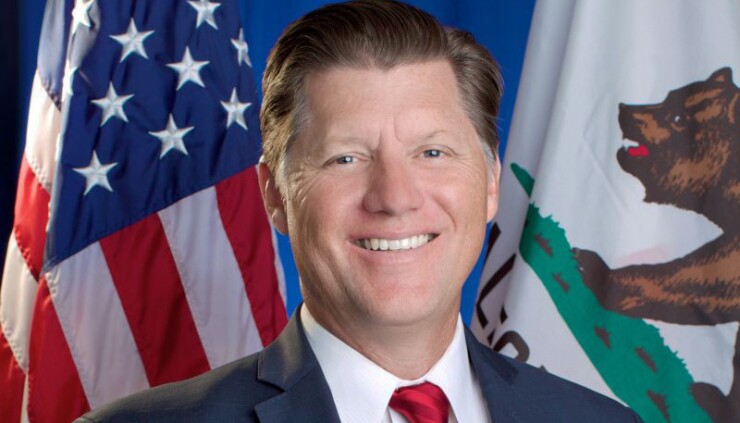A recent panel discussion featuring two state Senate leaders foreshadows a potential fight over California Gov. Gavin Newsom's proposed cuts to mass transit to close a budget gap.
The budget plan the governor introduced Jan. 10 included trigger cuts to some programs that would be restored if revenues improve between now and the annual May budget revision.
The governor said he opted to include cuts so he could leave reserves untouched if the country enters a recession this year and revenues fall further.

The state faces a $22.5 billion shortfall in fiscal 2024, according to the state's Department of Finance.
Democratic Senate President pro tem Toni Atkins and Minority Leader Brian Jones, who each represent swaths of San Diego County, avoided heated partisan disputes during last week's panel discussion moderated by Public Policy Institute of California President and CEO Tani Cantil-Sakauye, who stepped down as chief justice of the state Supreme Court in September to take the job.
Both Atkins and Jones said they support Newsom's decision to favor cuts and belt tightening over drawing down the state's multiple reserves that were created in the years after the 2008 Great Recession to soften the blow from the large swings revenues can take because of the dependence on a progressive income tax highly influenced by the fortunes of the state's wealthiest residents.
"The Republican caucus agrees with the governor that we shouldn't be dipping into those reserves," said Jones, who leads an eight-person caucus in the 40-seat Senate. "Things might be even worse next year."
The state has $35.6 billion available in various reserve funds and $22.4 billion in its rainy day fund, the latter roughly equal to the current projected deficit, according to the governor's proposed budget.
Atkins noted California's reserves not only include a rainy day fund but also several other reserve funds including one for K-12 education.
"I agree with Senator Jones that we need to protect the reserves," Atkins said. "There was a $26 billion deficit when Brian and I came into office. We were there when the hard decisions had to be made, and worked with former Gov. Jerry Brown and the current governor to create the reserve system so we would never be in that position again."
Atkins signaled there was likely to be a battle over cuts to mass transit, but added with a shrug that debates over various pots of money is a common part of budget negotiations. Lawmakers typically wrangle over the budget until May, when Newsom presents his revised budget based on updated revenue data, and then it heads back to the Legislature for final changes ahead of the fiscal year's July 1 start date.
Newsom proposed deferring spending billions of dollars on public universities, transit, behavioral health, climate change efforts and water projects. The budget tentatively cuts $3.9 billion, but Newsom said those cuts included in his January proposed budget could be reversed in May if revenues improve.
Newsom's
The majority of that $2.7 billion, roughly $2 billion, would hit the transit and intercity rail programs.
For the state's intercity rail capital programs, that means a "reduction of planned funding in 2023 and 2024 from $2 billion each year to $1 billion in 2023-24 and $500 million in each of 2024-25 and 2025-26," according to Newsom's proposed budget. "These funds are set to be allocated proportionally, by region, based on population."





